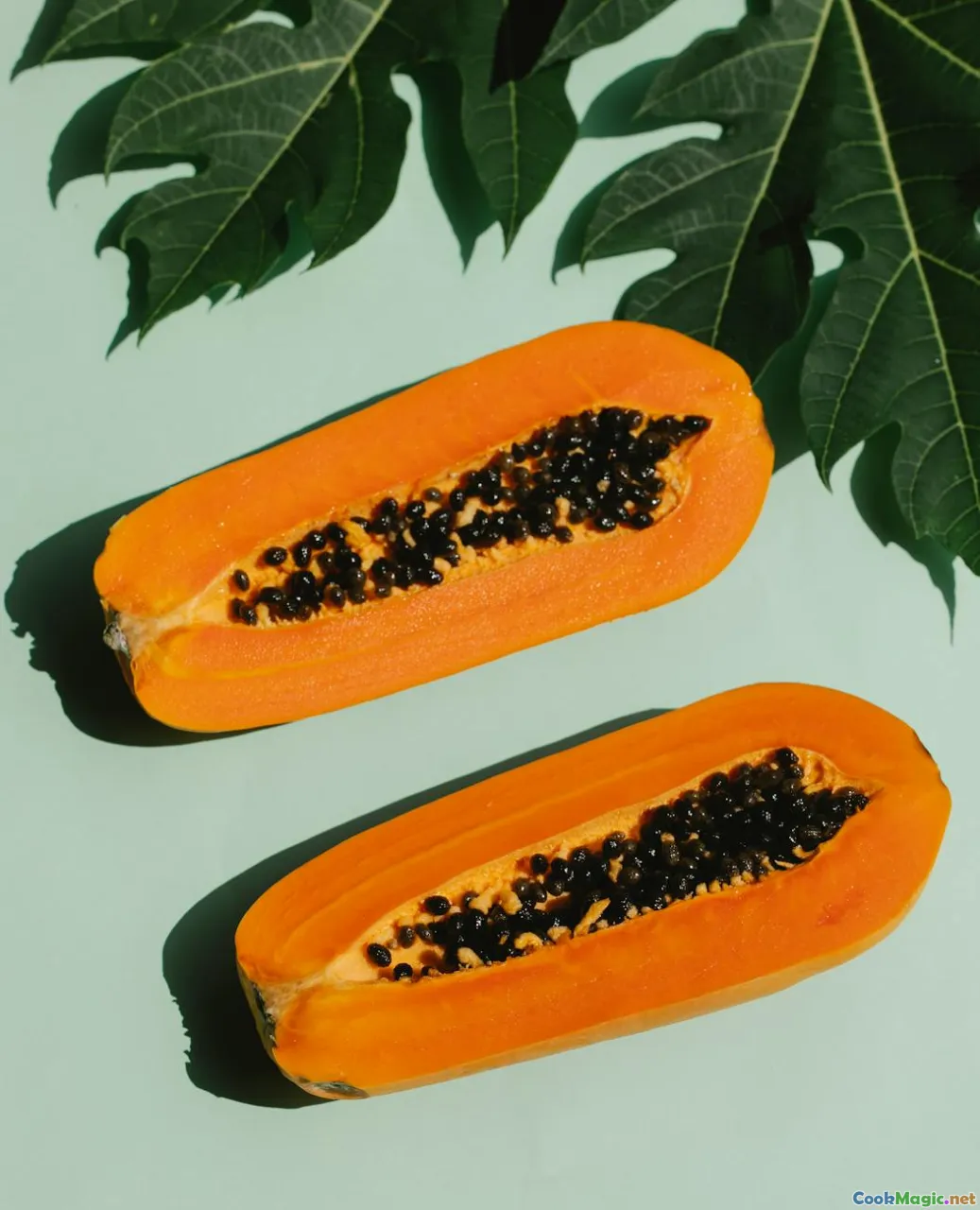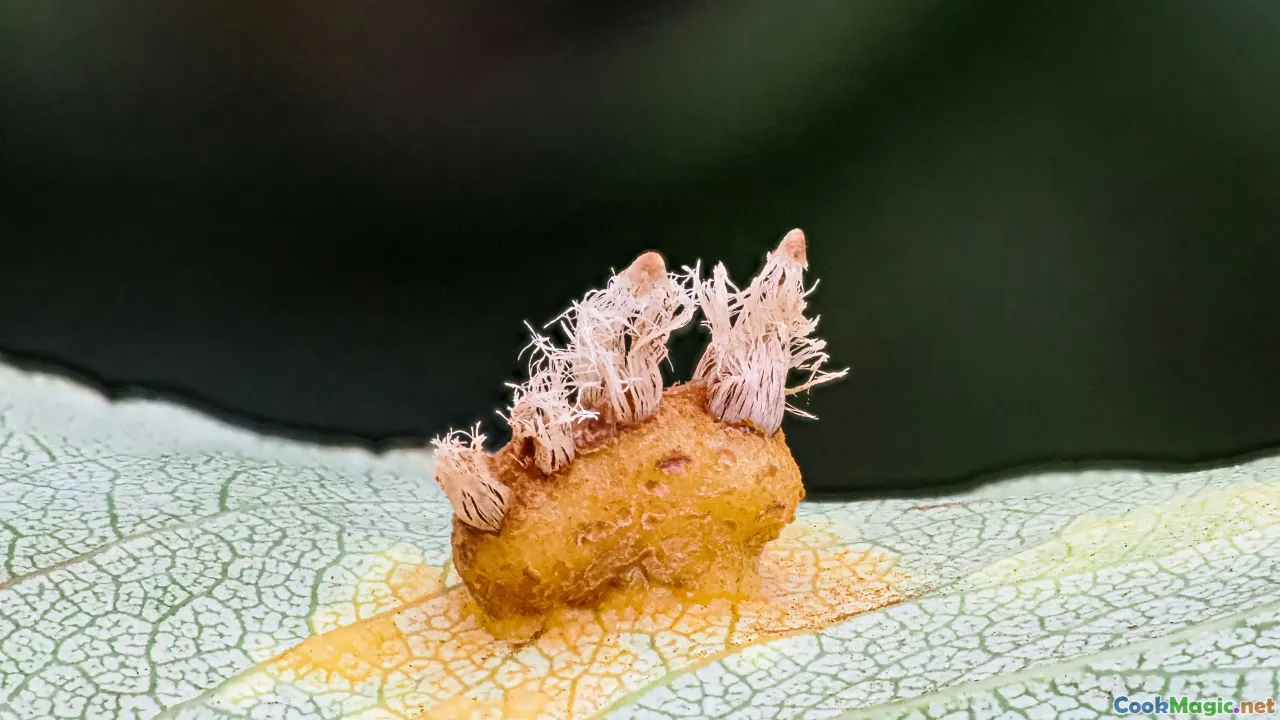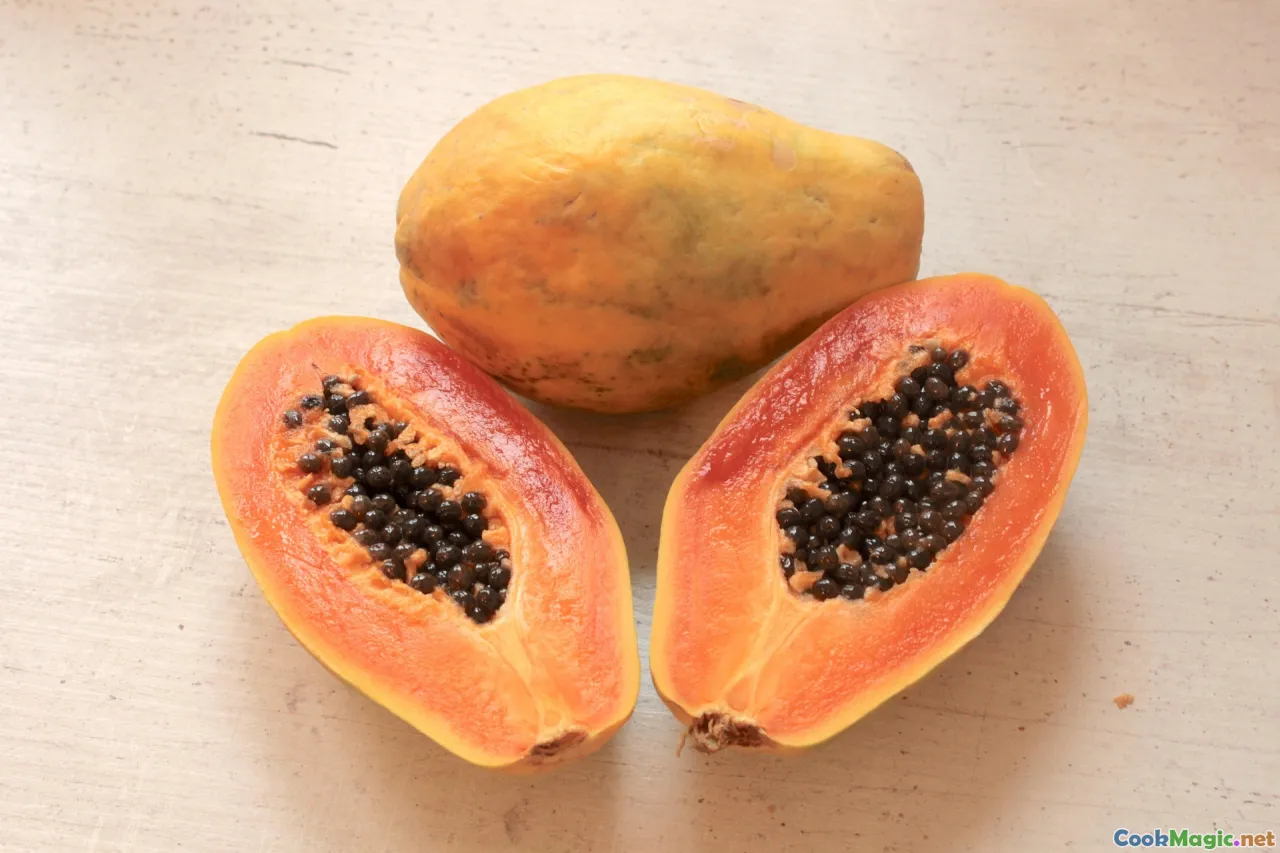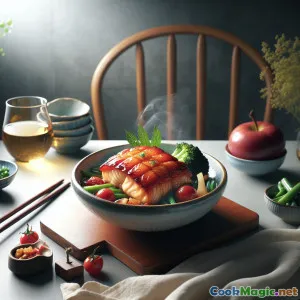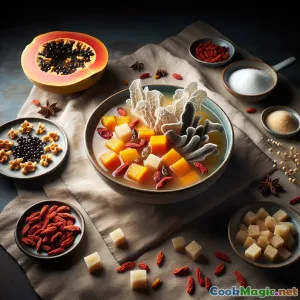
繊細なクラウドキノコとパパイヤの中華甘味スープ
(Delicate Cloud Fungus & Papaya Chinese Sweet Broth)
(0 レビュー)材料
-
15 grams 乾燥した雪菌(雪茸)
(Soak to rehydrate)
-
1 medium (about 300g peeled) 熟したパパイヤ
(一口大にカットする)
-
50 grams 塩糖
(お好みの甘さに調整してください)
-
2 tablespoons ゴジベリー
(Rinse and soak in water)
-
30 grams 干し蓮の実
(Soaked 3 hours, skin & germ removed)
-
900 ml フィルタリングされた水
(Can use mineral or spring water)
-
1 piece (15 cm, knotted) パンダンリーフ
(Adds fragrance; remove before serving)
(Soak to rehydrate)
(一口大にカットする)
(お好みの甘さに調整してください)
(Rinse and soak in water)
(Soaked 3 hours, skin & germ removed)
(Can use mineral or spring water)
(Adds fragrance; remove before serving)
栄養
- 分量: 4
- 1人分の量: 1杯(200ml)
- Calories: 130 kcal
- Carbohydrates: 0 g
- Protein: 2 g
- Fat: 0.5 g
- Fiber: 4 g
- Sugar: 15 g
- Sodium: 9 mg
- Cholesterol: 0 mg
- Calcium: 38 mg
- Iron: 1 mg
作り方
-
1 - Rehydrate Cloud Fungus:
Soak dried cloud fungus in cold water for 15-20 minutes until it expands and softens. Trim off any tough stems and separate into small florets. Rinse thoroughly.
-
2 - Prepare Lotus Seeds:
If using, drain soaked lotus seeds. Remove any remaining seed skin and cut away the bitter green germ in the middle.
-
3 - Dice Papaya:
Peel and deseed the papaya. Cut the flesh into 2 cm cubes. Set aside for later.
-
4 - Assemble the Broth:
In a large pot, combine water, lotus seeds, rehydrated cloud fungus, and the optional pandan leaf. Bring to a boil over medium-high heat.
-
5 - Simmer the Ingredients:
Reduce heat to low and simmer uncovered for 20-25 minutes, or until the fungus is gelatinous and lotus seeds become tender.
-
6 - Add Papaya and Sweetener:
Add papaya cubes, rock sugar, and soaked goji berries to the pot. Simmer gently for 5-7 minutes until papaya is just soft but holds its shape.
-
7 - Final Touches and Serve:
Remove pandan leaf (if used). Taste and adjust sweetness or water if needed. Serve warm or chilled in dessert bowls.
Soak dried cloud fungus in cold water for 15-20 minutes until it expands and softens. Trim off any tough stems and separate into small florets. Rinse thoroughly.
If using, drain soaked lotus seeds. Remove any remaining seed skin and cut away the bitter green germ in the middle.
Peel and deseed the papaya. Cut the flesh into 2 cm cubes. Set aside for later.
In a large pot, combine water, lotus seeds, rehydrated cloud fungus, and the optional pandan leaf. Bring to a boil over medium-high heat.
Reduce heat to low and simmer uncovered for 20-25 minutes, or until the fungus is gelatinous and lotus seeds become tender.
Add papaya cubes, rock sugar, and soaked goji berries to the pot. Simmer gently for 5-7 minutes until papaya is just soft but holds its shape.
Remove pandan leaf (if used). Taste and adjust sweetness or water if needed. Serve warm or chilled in dessert bowls.
繊細なクラウドキノコとパパイヤの中華甘味スープ :の詳細
The Elegant Simplicity of Cloud Fungus and Papaya Dessert Broth
This Cloud Fungus and Papaya Dessert Broth—sometimes called Snow Fungus Dessert Soup or 雪耳木瓜糖水 (xuě ěr mù guā táng shuǐ)—showcases a style of refined sweet soup beloved across Southern China, Hong Kong, and Southeast Asia. With its satiny-silky texture, delicate flavors, and intriguing health appeal, this ‘tong sui’ (糖水, literally ‘sugar water’) is a classic that brings together medicinal wisdom, comfort, and modern dessert sensibility.
Origin & Cultural Significance
Snow fungus—a common English moniker for white cloud fungus (Tremella fuciformis)—has been cherished in Chinese culture for hundreds of years. Known as the “poor man’s bird’s nest” due to its gelatinous clarity and smoothness, it has featured in Imperial feasts and contemporary homes. High in dietary fiber, plant-derived polysaccharides, and famed for hydrating and beautifying skin according to traditional Chinese medicine, snow fungus forms the core of this rejuvenating dish.
Papaya, meanwhile, is prized for its vibrant color, enzyme-rich content, and gentle sweetness that harmonizes well with snow fungus. Both ingredients are cooling (yin) according to TCM, making the dessert particularly suited to hot weather and times when soothing refreshment is called for. Accents like lotus seed (associated with calm, focus, and longevity), goji berries (antioxidants and color), and pandan leaf for aromatic lift, transform the bowl into something both simple and elegant.
Preparation Tips & Uniqueness
Textural Play: The chief allure of this dessert lies in its contrast of textures—crispy-tender blossoms of snow fungus amid soft papaya, smooth lotus seed, and the juicy pop of goji berries. Each ingredient’s role is subtle and measured.
- Rehydrating Snow Fungus: Choose pure white, crisp specimens and allow time for proper soaking; the fungus expands considerably and develops its signature crunch-meets-gel sac quality when simmered gently. Remove yellow stems for the best texture.
- Papaya Ripeness: Use medium-ripe papayas: firm enough to hold shape but aromatic and sweet. Avoid overripe papaya, which gets mushy after simmering.
Mistakes-to-Avoid & Variations:
- Do not overboil the papaya or fungus; both should remain texturally lively.
- For an extra clean, translucent appearance, strain the broth before serving.
- Adjust sweetness by rock sugar or try honey (at service, not during simmering, to preserve its enzymes).
- Omit lotus seeds for a lighter, wholly vegan option, or add dried longans or red dates for additional flavor.
Modern Takes: You can present this dessert hot in winter or ice-cold in summer. While classic white bowls are traditional, clear glass accentuates the jewelled colors. For a festive touch, scatter with gold leaf or edible flowers.
Health Benefits
Cloud fungus’s mucilaginous quality is believed to help clear dry heat, moisten lungs, and nurture skin. Papaya brings vitamin C, beta-carotenes, and aid to digestion. The low calories and high fiber make this an excellent light dessert, suitable for all ages and dietary preferences. With vegan ingredients and no refined fats, this soup-like dessert offers sustenance and peace for both body and mind.
Personal Thoughts
Hong Kong’s communal dessert houses (“Tong Sui” shops) often feature snow fungus soups among their top offerings, beckoning with that distinct combination of nourish-and-comfort. Preparing this at home connects you to a long culinary heritage—one where dessert bolsters health as much as palate pleasure.
This recipe highlights global Chinese tradition but welcomes subtle innovation suited to your pantry, taste, and creativity. There are few desserts both so utterly simple, elegantly pure, and vibrantly healthy. Whether for after-dinner refreshment, a festive treat, or even breakfast (as is custom in some regions), Cloud Fungus and Papaya Dessert Broth deserves a place in every global dessert repertoire.

